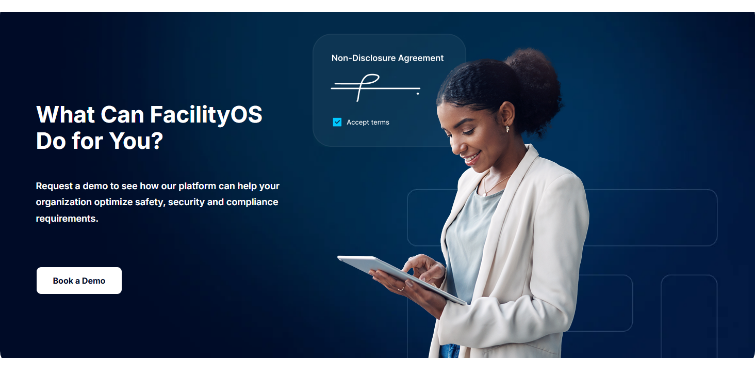Securing Election Equipment with Digital Chain-of-Custody Solutions
Government agencies managing sensitive assets (election equipment, law enforcement evidence, critical infrastructure components) face a complex challenge: every custody transfer must be documented, verified, and auditable.
This blog examines how digital logistics systems help agencies implement the chain-of-custody standards recommended by CISA, from serialized tracking and role-based access controls to tamper-evidence documentation and centralized audit trails. We'll explore the regulatory framework, technical solutions, and real-world implementations that enable government facilities to maintain security and compliance across multi-site operations.
What is Chain-of-Custody?
According to CISA's guidance on chain of custody, the process tracks the movement and control of an asset through its lifecycle by documenting each person and organization who handles it, the date and time of collection or transfer, and the purpose of the transfer. This applies to both physical assets (like voting machines, ballots, and equipment) and digital materials such as electronic transmissions or records.
For election infrastructure specifically, chain of custody best practices include control forms, tamper-evident seals and bags, and serialized equipment to ensure that ballots and removable media containing sensitive data are authentic and have not been compromised.
The Cost of a Broken Chain-of-Custody
A break in the chain-of-custody refers to a period during which control of an asset is uncertain and actions taken on the asset are unaccounted for or unconfirmed. As CISA notes, such breaks present opportunities for harm (whether intentional or unintentional) that may compromise the integrity of the asset or data.
The potential impacts are severe:
- The integrity of the system and its underlying data can no longer be trusted
- The reliability, accuracy, and security of records cannot be guaranteed
- Systems and data may be rendered inadmissible in legal proceedings
- Election offices cannot provide assurance that equipment has not been tampered with
In some cases where chain-of-custody cannot be meaningfully reestablished, equipment may need to be decommissioned and replaced, a time-consuming and costly undertaking that government agencies can ill afford.
Key Challenges for Government Logistics
Government agencies managing election equipment and other sensitive assets face several unique challenges that require robust tracking systems and documented processes:
Security & Accountability
Government facilities require strict control over who accesses sensitive materials and when. Election Supervisor offices must maintain rigorous chain-of-custody for sensitive election equipment, tracking asset movement from warehouse to truck to voting location and back. Chain of custody must provide audit-ready records—accurate, secure record-keeping that meets regulatory oversight requirements and can be produced quickly during audits. Without proper systems, tracking becomes ineffective and cumbersome, creating gaps in accountability.
Compliance Requirements
Government agencies must meet specific compliance standards that directly support chain-of-custody requirements for tracking assets. These include CJIS compliance (data security standards for criminal justice information that require documented tracking of evidence and materials), NIST standards (providing the cybersecurity framework that defines how chain-of-custody systems should track and protect assets through the five functions: Identify, Protect, Detect, Respond, and Recover), and state and federal audit mandates that demand digital, centralized documentation proving an unbroken chain-of-custody for all tracked assets.
For election offices specifically, maintaining chain-of-custody is not just about security; it's about ensuring the integrity and transparency of democratic processes. As election security experts emphasize, well-documented chain-of-custody helps guarantee that equipment has not been tampered with. It provides the foundation for authenticating results and corroborating post-election audits.
Multi-Site Scalability
Government operations often span multiple facilities, departments, or even statewide deployments. Election offices, for example, coordinate operations across dozens of precincts and early voting sites while managing a wide variety of assets like voting machines, ballot boxes, and equipment kits. This requires unified visibility to track assets across agencies and facilities, standardized processes that work across diverse locations, and centralized reporting for enterprise-wide oversight. Manual tracking methods like spreadsheets quickly become time-consuming, prone to human error, and create critical gaps in accuracy and security.
A Framework for Securing Chain-of-Custody
According to CISA, critical infrastructure owners and operators should utilize the NIST Cybersecurity Framework to establish chain-of-custody standards. The framework consists of five functions:
 Identify
Identify
- Identify critical assets within the organization, including all assets used to transfer data physically and digitally
- Inventory all systems, devices, software, data, and people
- Document the digital and analog forms or logs that track transactions and access
- Routinely assess logs to identify any gaps in transactions or access
Asset tracking software like LogisticsOS can support this by enabling organizations to inventory and track all assets, systems, and materials that move through their facilities. The system maintains a comprehensive database that documents transaction logs and identifies any gaps in custody records.
 Protect
Protect
- Secure assets physically with tamper-evident seals, locked storage, and restricted access areas
- Implement serialized tracking and unique identifiers for each sensitive asset
- Use continuous monitoring and verification checkpoints throughout the asset lifecycle
- Protect asset integrity and authenticity through documented chain-of-custody procedures
Asset and parcel tracking software like LogisticsOS can support this by capturing serialized tracking numbers and unique identifiers for each sensitive asset through barcode scanning. Continuous monitoring and verification checkpoints throughout the asset lifecycle maintain custody chain integrity. Every asset movement is logged electronically with barcodes tracking each asset independently from initial receipt through internal transfers to final delivery or storage.
 Detect
Detect
- Log all transactions electronically or physically through chain-of-custody documents
- Track each asset independently through unique identification, such as tamper-evidence or serialization
- Establish incident alert thresholds
- Guarantee continuous monitoring and alerting of detective measures
Asset tracking software like LogisticsOS can support this by providing digital documentation combined with photographic evidence at each checkpoint to create multiple layers of verification. Real-time notifications and alerts enable rapid detection of any integrity issues or custody anomalies.
 Respond
Respond
- Establish processes to receive, analyze, and respond to incidents involving tracked assets, such as breaches in chain-of-custody or loss of asset integrity
- Investigate notifications from detection systems when asset tracking anomalies or custody discrepancies are identified
- Report incidents involving tracked assets consistent with established criteria
- Provide strict oversight of forensic activities to maintain chain-of-custody when investigating incidents related to asset handling or custody transfers
Asset tracking software like LogisticsOS can support this by providing real-time notifications and alerts that enable rapid investigation of anomalies. Comprehensive audit trails provide the detailed documentation needed to analyze incidents and report them consistent with established criteria.
 Recover
Recover
- Execute recovery processes to restore chain-of-custody documentation and asset tracking after incidents involving custody transfers or asset handling
- Review custody records and physical evidence (seals, signatures, timestamps) to determine if chain-of-custody has been compromised
- Investigate custody gaps by validating transaction logs, verifying personnel access records, and documenting the circumstances of any breaks in custody
- In cases where chain-of-custody cannot be meaningfully reestablished through investigation and documentation, consider decommissioning and replacing assets
Asset tracking software like LogisticsOS can support this by providing detailed transaction records and comprehensive audit trails that enable agencies to review asset handling history and determine whether items have been compromised. The solution's accurate visibility into asset location and custody status supports recovery processes by providing administrators with immediate access to critical information. Centralized dashboards provide enterprise-wide oversight across multiple facilities and departments, enabling rapid response to incidents.
Case Study: State of Louisiana Modernizes Statewide Logistics Operations
The State of Louisiana's deployment of LogisticsOS demonstrates how government agencies can achieve secure, scalable chain-of-custody management across complex, multi-site operations. Louisiana's implementation illustrates the core principles of accountability, transparency, and audit-readiness that apply to all sensitive government assets.
The Challenge
Louisiana's Office of Technology Services manages 100-120 million mail pieces annually, serving over 1,800 internal customers across Executive Branch departments. The materials include highly sensitive documents such as birth certificates, driver's licenses, and tax documents: assets requiring rigorous chain-of-custody standards.
Before implementing LogisticsOS, the state faced:
- No unified tracking system: Legacy software lacked scalability and security features
- Limited visibility: No real-time tracking of mail items
- Compliance gaps: Difficulty maintaining audit records and meeting regulatory standards like IRS Publication 1075
The Solution and Results
The State of Louisiana deployed LogisticsOS with:
- Barcode tracking: Each item tracked from receipt through final delivery
- Real-time visibility: Immediate access to location and status across all facilities
- System integration: Connected with OPEX sorting machines and Pitney Bowes intelligent lockers
- Recipient database: Registered users for expedited interactions and full accountability
- Comprehensive audit trails: Accurate transaction records supporting regulatory compliance
This implementation delivered:
- Strengthened compliance: Audit-ready records meeting IRS Publication 1075 standards
- Scalable operations: Expanded from under 15 to over 70 full-time staff while maintaining security
- Rapid response: Quick answers to inquiries and audit requests
The State of Louisiana's implementation demonstrates that digital chain-of-custody principles (serialized tracking, role-based access, tamper-evidence, and centralized reporting) can be applied across all sensitive government logistics operations. This provides the transparency and accountability agencies need to maintain public trust while meeting stringent regulatory requirements.
Looking Forward: Building Trust Through Transparency
As election officials recognize, chain-of-custody documentation ensures election procedures are followed and that security is maintained. Specifically, it provides evidence that election officials can use to authenticate results, corroborate post-election audits, and demonstrate to the public that outcomes can be trusted.
The same principles apply to all sensitive government assets. Whether managing election equipment, evidence in law enforcement facilities, or critical infrastructure systems, maintaining an unbroken chain-of-custody is essential to security, compliance, and public trust.
Government agencies that invest in modern, digital chain-of-custody solutions position themselves to meet evolving regulatory requirements while improving operational efficiency. By moving from manual logs and paper trails to integrated digital platforms, agencies gain the transparency, accountability, and audit-readiness that today's security landscape demands.
Discover how LogisticsOS chain-of-custody software helps government agencies track inbound assets from arrival to final delivery with full compliance and audit-ready documentation.
Stay updated with industry insights, success stories, and more by following us on social media for the latest FacilityOS content.
Table of Contents
Candace Bartolowits



 Follow us on Facebook
Follow us on Facebook  Follow us on X
Follow us on X
 Follow us on LinkedIn
Follow us on LinkedIn